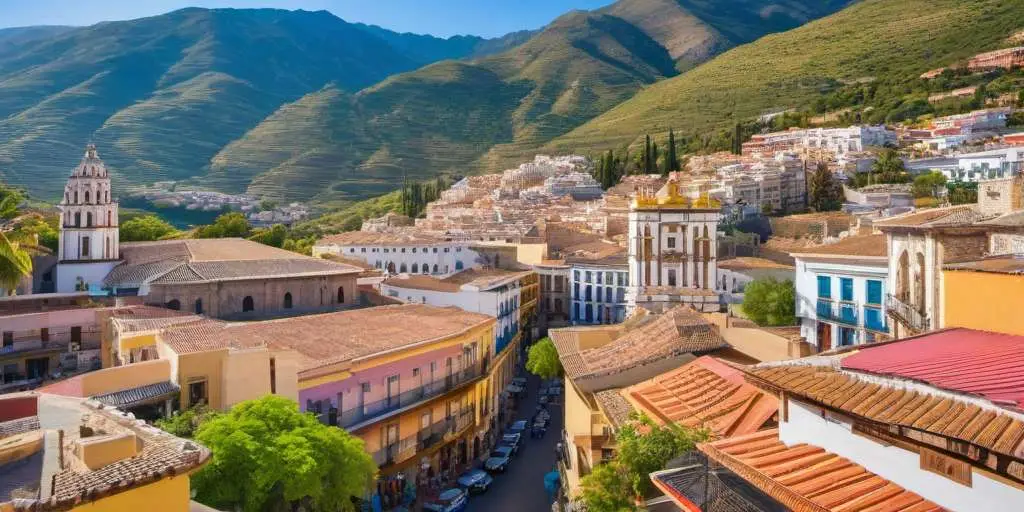What places speak Spanish
Spanish is widely spoken across the world, with over 560 million speakers globally. It is the second most spoken native language worldwide. Spain, Mexico, and countries in Latin America have the highest number of native Spanish speakers. In the United States, Spanish is spoken by over 50 million people, making it the second-largest Spanish-speaking country. The language’s global influence continues to grow, bridging cultures and creating connections worldwide.
Overview of Spanish Language
History of Spanish Language
The history of the Spanish language is rich and diverse, tracing back to the region of Castile in Spain. Spanish, also known as Castilian, evolved from Latin and was heavily influenced by Arabic during the Moorish occupation of Spain.
Spanish-Speaking Countries
Spain, Mexico, and various countries in Latin America, such as Colombia, Argentina, and Venezuela, are among the Spanish-speaking nations. Spanish is the official language in these countries and plays a significant role in their cultural identity.
Importance of Spanish Language
With over 560 million speakers worldwide, Spanish holds a prominent place among global languages. Its cultural significance, economic impact, and widespread use in international communication underscore the importance of Spanish as a global language.
Spanish in the United States
Spanish in the United States is a significant aspect of the country’s cultural landscape. With a diverse population, Spanish plays a crucial role in various aspects of American society.
Spanish-Speaking Population in the U.S.
The Spanish-speaking population in the U.S. is extensive and continues to grow. It reflects the country’s rich cultural tapestry and the influence of Hispanic heritage.
Distribution of Spanish Speakers in the U.S.
Spanish speakers in the U.S. are dispersed across different states, with notable concentrations in regions with historically strong Hispanic communities.
Official Status of Spanish in the U.S.
The official status of Spanish in the U.S. varies, reflecting the nation’s commitment to linguistic diversity and cultural inclusivity.
Impact of Spanish in American Culture
Spanish has a profound impact on American culture, influencing music, cuisine, art, and everyday language use. It enriches the American cultural experience.
Spanish Education in the U.S.
Spanish education in the U.S. is vital for promoting language proficiency and understanding across different communities. It serves as a bridge between diverse populations.
Spanish in Europe
Spanish in Spain
Spain is the birthplace of the Spanish language, with a rich history and diverse linguistic landscape. While Spanish is the official language, Spain also boasts several regional languages such as Catalan, Basque, and Galician.
Regional Languages in Spain
In addition to Spanish, Catalan is widely spoken in Catalonia, while Basque is predominant in the Basque Country. Galician is spoken in Galicia, showcasing the linguistic diversity within Spain.
Spanish in other European Countries
Spanish extends beyond its borders and has a notable presence in other European countries. Its influence can be seen in cultural activities, educational programs, and diplomatic relations, contributing to the language’s global reach.
Influence of Spanish Language in Europe
Spanish serves as a bridge between Europe and Latin America, fostering connections and collaborations across continents. Its significance in European societies highlights the language’s adaptability and enduring appeal.
Spanish in Latin America
Latin America is home to several major Spanish-speaking countries that play a significant role in the global Spanish-speaking community. These countries, including Mexico, Colombia, Argentina, and Venezuela, are known for their rich linguistic and cultural heritage.
Major Spanish-Speaking Countries in Latin America
- Mexico
- Colombia
- Argentina
- Venezuela
Mexico and Colombia
Mexico and Colombia are two of the most populous Spanish-speaking countries in Latin America, with vibrant cultures and diverse populations. They are known for their unique traditions, delicious cuisine, and colorful celebrations that showcase the essence of Latin American culture.
Argentina and Venezuela
Argentina and Venezuela are countries with rich histories and unique cultural influences. From the tango music and dance of Argentina to the stunning natural landscapes of Venezuela, these nations have much to offer in terms of cultural experiences and linguistic diversity.
Cultural Impact of Spanish in Latin America
The Spanish language in Latin America has had a profound cultural impact, shaping the arts, literature, music, and traditions of the region. From iconic authors like Gabriel Garcia Marquez to vibrant festivals like Carnival, Spanish language and culture are deeply intertwined in the fabric of Latin American society.
Spanish Language Policies
The policies regarding the Spanish language play a crucial role in shaping the linguistic landscape of countries where Spanish is spoken. Let’s explore the different aspects related to the official status, constitutional recognition, legal frameworks, and efforts to preserve and promote the Spanish language.
Official Language Status
In various Spanish-speaking countries, the official recognition of Spanish as the primary language is enshrined in their constitutions or specific language laws. This status emphasizes the importance and prevalence of Spanish in official government communications, documents, and institutions.
Constitutional Recognition of Spanish
- The constitutional recognition of Spanish reaffirms its significance as a language of identity, culture, and communication. In many cases, the constitution explicitly acknowledges Spanish as the official language and outlines its role in promoting national unity and diversity.
Legal Frameworks for Spanish Language
- Legal frameworks establish guidelines for the use of Spanish in various domains, including education, administration, justice, and media. These laws address linguistic rights, language planning, and the protection of Spanish language heritage.
Efforts to Preserve and Promote Spanish Language
- Efforts to preserve and promote the Spanish language encompass initiatives such as language academies, cultural programs, language revitalization projects, and educational campaigns. These activities aim to safeguard the rich linguistic heritage of Spanish and ensure its vitality in the face of linguistic diversity.
Spanish Language and Global Influence
Exploring the impact of the Spanish language on a global scale unveils a rich tapestry of cultural exchange and linguistic resonance. As Spanish continues to thrive as a global language, its influence extends beyond national borders, shaping international interactions and fostering cross-cultural communication.
Spanish as a Global Language
Spanish has solidified its position as a true global language, with widespread use across continents and diverse communities. Its prevalence in various regions serves as a testament to its adaptability and enduring relevance in the modern world.
Spanish in International Organizations
Within international organizations, the presence of Spanish plays a crucial role in facilitating multilateral dialogue and cooperation. As a widely spoken language, Spanish enhances inclusivity and ensures effective communication among diverse member states.
Role of Spanish in the United Nations
- Spanish’s official status in the United Nations underscores its importance in diplomatic affairs and global governance.
- As one of the six official languages of the UN, Spanish enables meaningful participation and representation for Spanish-speaking countries.
- The use of Spanish in UN proceedings reflects the language’s status as a key player in shaping global policies and initiatives.
Future of Spanish Language
The future of the Spanish language holds exciting trends and challenges. As technology advances, the usage of Spanish continues to evolve, impacting communication on a global scale. Let’s explore the potential developments ahead:
Trends in Spanish Language Usage
1. Increasing global presence of Spanish in digital content and social media platforms.
2. Growth of Spanish language learning programs and resources worldwide.
3. Integration of Spanish language technologies in various industries for multilingual communication.
Challenges and Opportunities for Spanish Language
Language Evolution in the Digital Age
1. Ensuring the preservation of linguistic diversity within Spanish-speaking communities.
2. Adapting to digital communication platforms and technologies while maintaining language authenticity.
3. Encouraging multilingualism and cultural exchange to enrich the global linguistic landscape.
4. Addressing the impact of artificial intelligence on language translation and interpretation.
Do you want to practice this beautiful language? Come to my daily conversation classes

